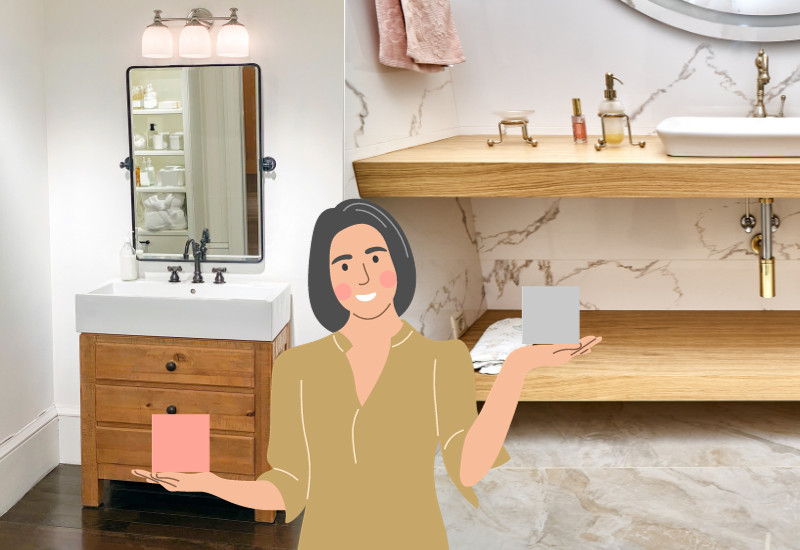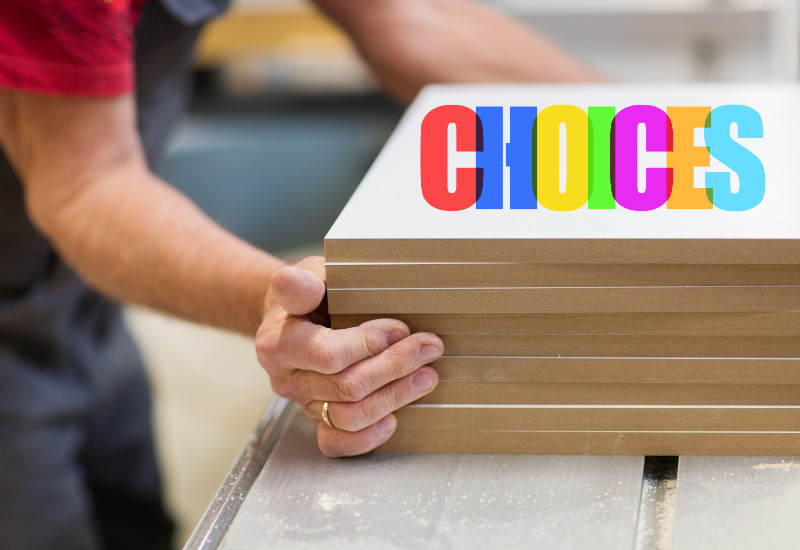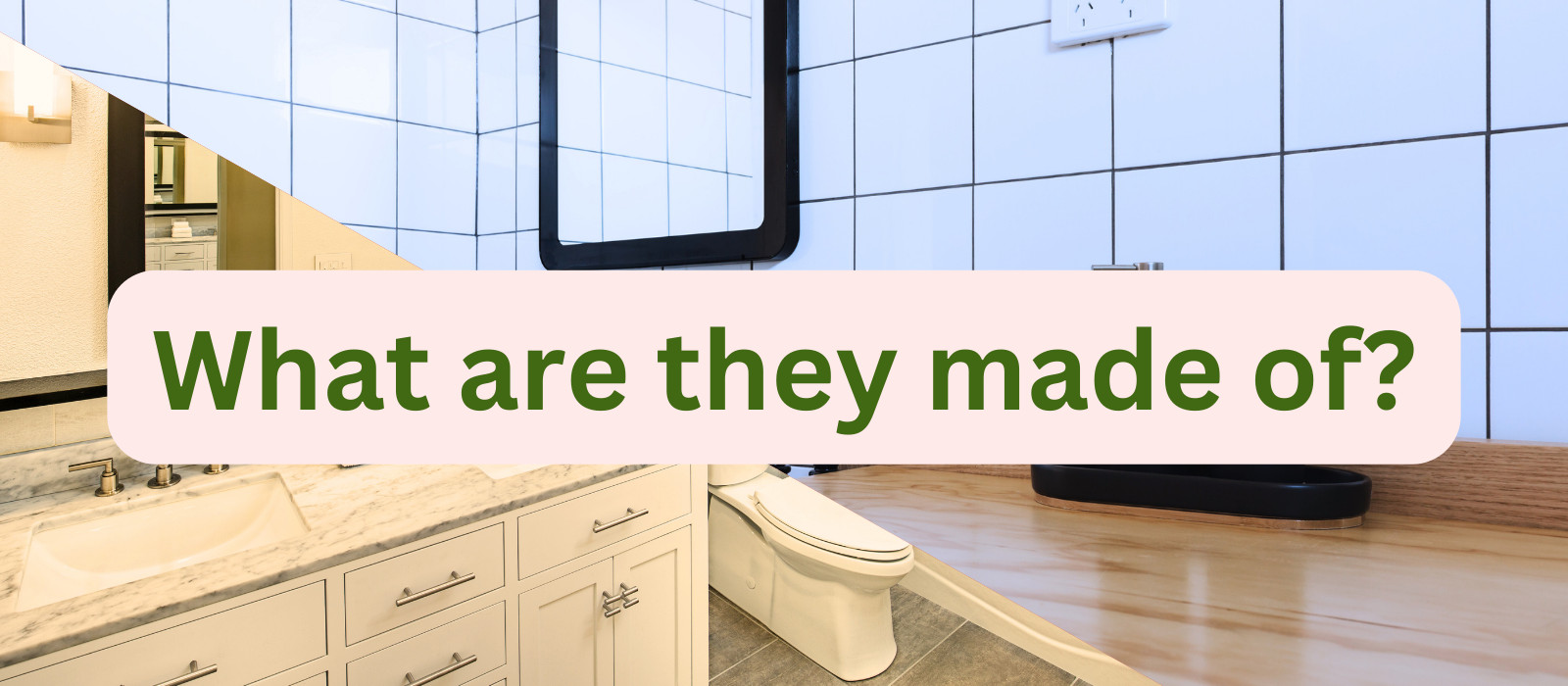Bathroom vanities are often the central feature of any well-designed bathroom, offering both functionality and aesthetic appeal. As you plan your bathroom renovation or design, it’s essential to understand the various materials used to construct vanities. This will ultimately help you select the most suitable option to meet your needs, preferences, and budget.
The range of materials available for bathroom vanities provides a wide variety of looks and designs, each with its unique advantages and disadvantages. Common materials include medium-density fiberboard (MDF), melamine-faced chipboard (MFC), various woods, laminate, ceramic, and natural stone. By exploring these options, you can decide about the aesthetic and durability you desire in your bathroom vanity.
As you delve deeper into the topic, you’ll discover how different materials have varying levels of water resistance, ease of maintenance, and overall longevity. Each material has unique properties, making it an ideal choice for specific situations and tastes. Understanding your options will empower you to make the best decision for your dream bathroom.
Understanding Bathroom Vanities
Bathroom vanities play a significant role in elevating the aesthetics and functionality of your bathroom. The perfect vanity can make your bathroom appear more spacious, organized, and visually appealing. With that said, before we dig deeper into the materials, what types are available to you?
Types of Bathroom Vanities

There are several styles of bathroom vanities with different mounting methods and functionality. Here are some popular options you may be looking at:
- Single sink vanity: These are compact vanities designed for smaller bathrooms. They typically have one sink, offering enough counter space and storage options for your essentials.
- Double vanity: For larger bathrooms or master suites, double vanities can accommodate two sinks, providing ample counter and storage space for multiple users.
- Wall-mounted or floating vanity: This type of vanity is mounted directly on the wall, creating a sleek, modern look. They help create an illusion of more floor space and are great for small bathrooms.
- Freestanding vanity: This style is the most common type of bathroom vanity. It stands on the floor and can be a single or double vanity, offering versatility in design and function.
When selecting your bathroom vanity, consider the size of your bathroom, your storage needs, and the overall aesthetic you want to achieve. With numerous styles, materials, and configurations, you can find the perfect vanity to enhance your bathroom experience.
Materials Utilized in Bathroom Vanity Construction
Now, let’s take a look at why those common materials for vanities are preferred over others!

Premium Materials
Regarding premium materials for bathroom vanities, solid wood, and engineered wood are top choices. Solid wood offers a luxurious look and excellent durability, making it a sought-after choice for high-end bathroom vanities. Engineered wood, like plywood, is produced by combining layers of wood veneer with adhesives, which results in a strong, stable product that’s less susceptible to warping and moisture damage.
Solid wood options:
- Oak
- Maple
- Cherry
- Walnut
Engineered wood options:
- Plywood
- Rubberwood
Cost-efficient Materials
For more budget-friendly options, you can consider manufactured wood materials like particle board, medium-density fiberboard (MDF), and composite wood for your bathroom vanity construction. These materials are made by compressing wood fibers or particles with adhesives, producing a more affordable yet sturdy product.

Additionally, you may opt for veneer and laminate finishes on these cost-efficient materials to enhance their appeal. Veneer is a slim layer of premium wood applied to the surface of manufactured wood, creating the illusion of solid wood. Laminate is a synthetic material that resembles wood or other materials and is adhered to the surface, offering a durable and water-resistant finish.
Manufactured wood options:
- Particle board
- MFC (melamine-faced chipboard)
- MDF (medium-density fiberboard)
- Composite wood
Finishes:
- Veneer
- Laminate
You can achieve the perfect balance between style, durability, and budget by choosing the right material for your bathroom vanity. Take time to consider your bathroom project’s specific needs and design preferences, and explore the options available to find the best fit for you.
Countertop and Sink Options
The choice of countertop material is critical when it comes to both durability and appearance. Popular materials include granite, solid surface, and teak. Granite countertops offer elegance and durability, while solid surface countertops provide a seamless, easy-to-clean surface. Teak countertops add warmth and a natural touch to your bathroom design.
When it comes to sinks, you have plenty of design options. The standard sink types include the under-mount, drop-in, and vessel sink. Undermount sinks create a sleek look as they’re installed under the vanity top. On the other hand, drop-in sinks are placed into a pre-cut hole in the countertop. For a more contemporary look, a vessel sink—the kind that sits on the countertop surface—might be the perfect choice.
Don’t forget to consider the shape of your sink as well; round and oval basins tend to have softer lines, while rectangular and square sinks give a more modern appearance. The faucet should also match both the style and functionality of your chosen sink and countertop.
Evaluating the Right Bathroom Vanity for Your Needs
No matter which material you choose for your new vanity, the most essential factor is loving how it looks. So be happy and confident with whatever decision you make.



